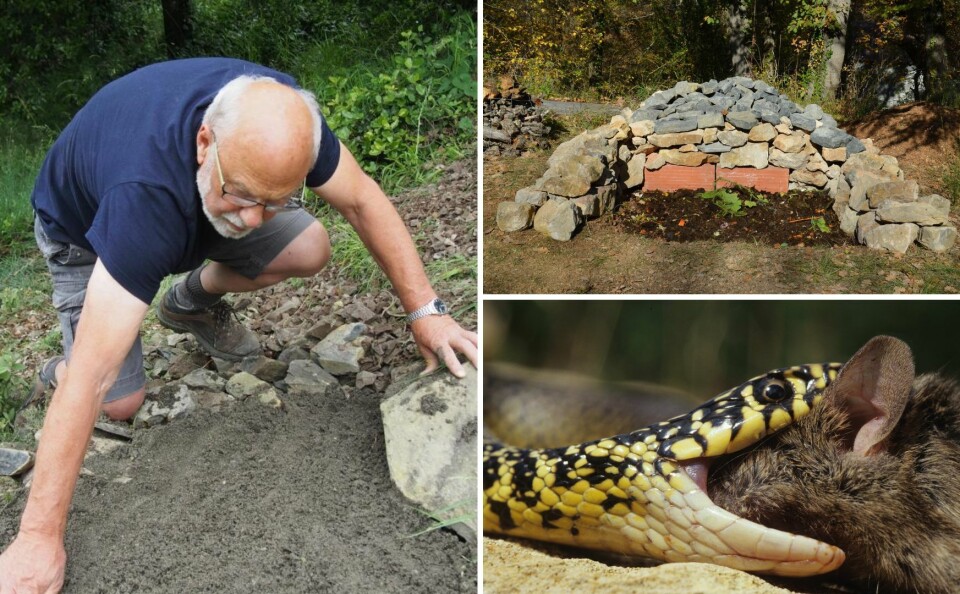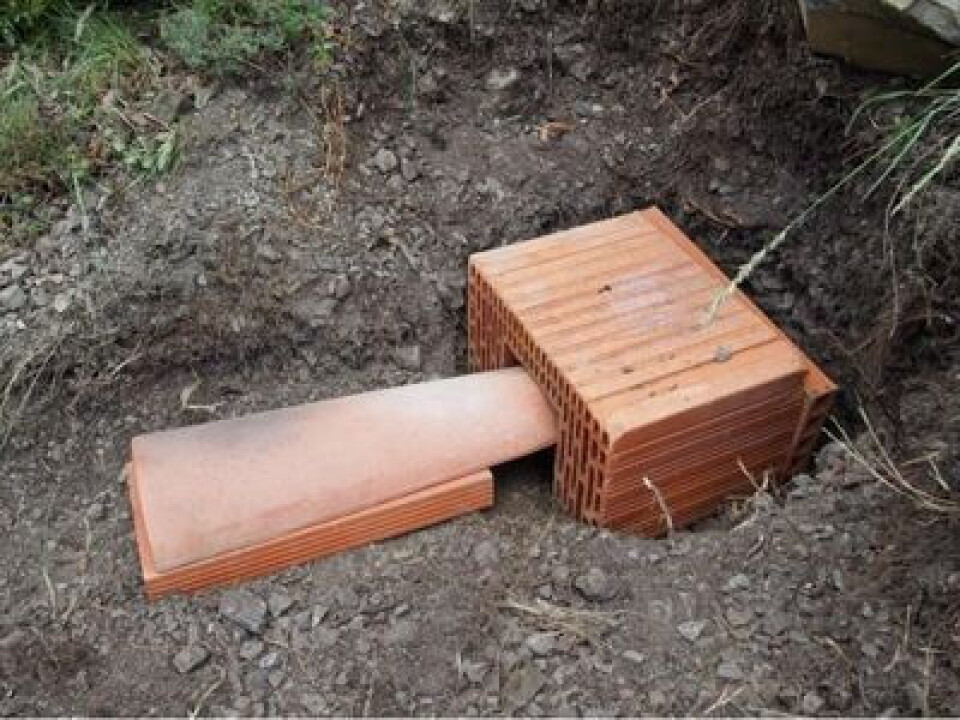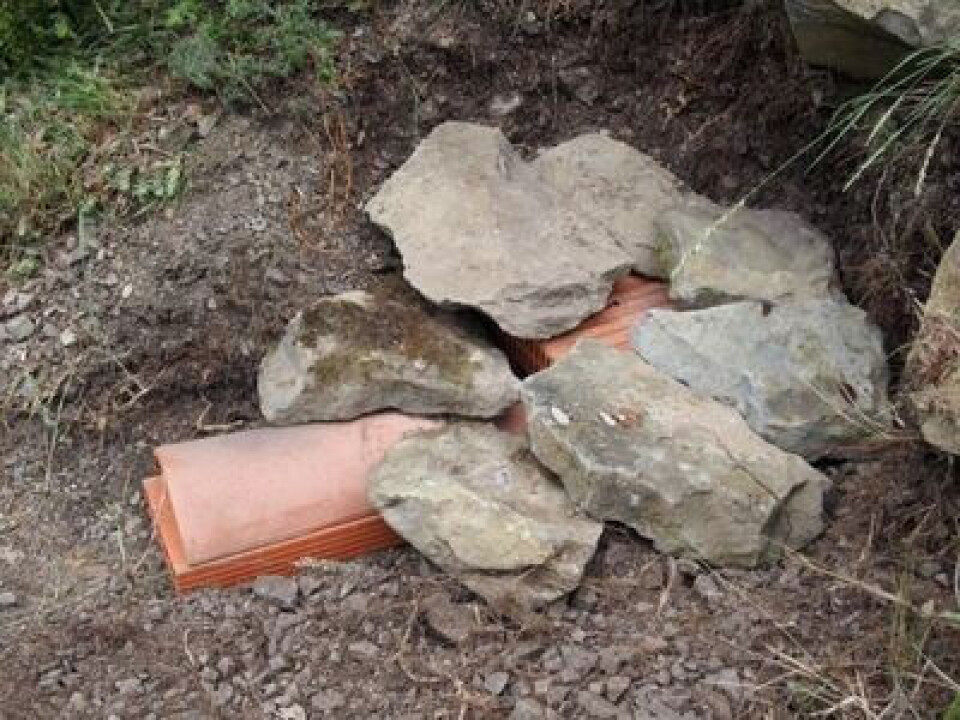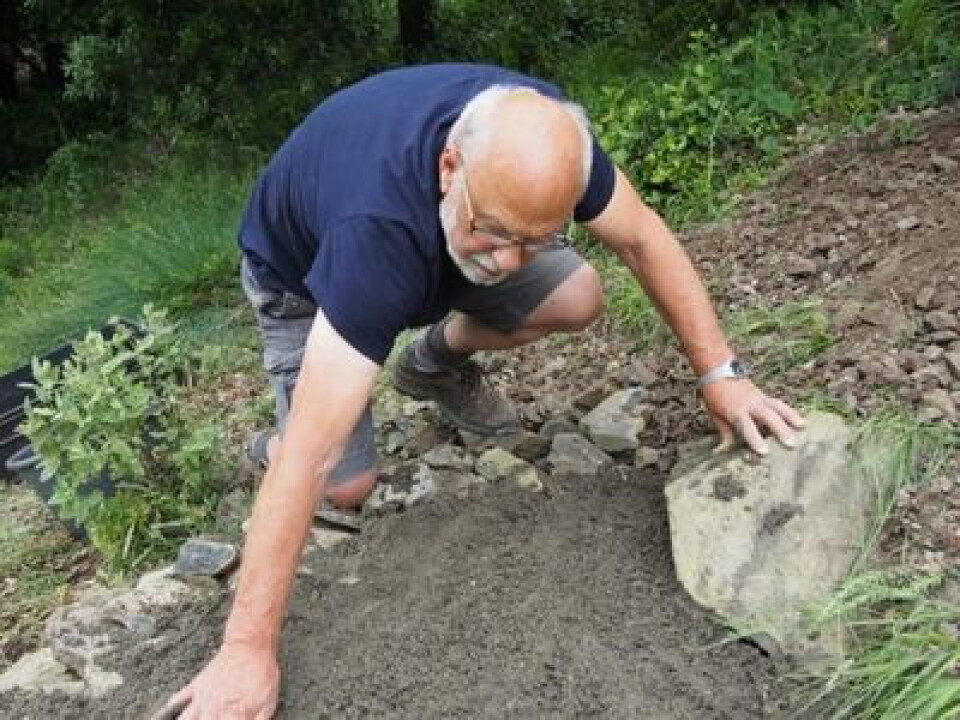-
What you should do to your garden in France in spring
Weeding, pruning, sowing, preparing the lawn…here is how to welcome sunnier days
-
Rules change for dog walking in France from April
Here is how to ensure you and your dog remain within the rules and avoid fines
-
Mimosa is pretty…but ‘posing threat to biodiversity’ in south of France
The flowers are prized in the region, but not everyone is thrilled to see their spread
How to build a snake hotel in your French garden as population falls
Jonathan Kemp makes snakes welcome in his garden in spite of his phobia

Most people, myself included, have a deep-seated phobia about snakes (serpents).
This must be a primal response from archaic times when venomous snakes were common in places where human beings lived; reinforced, perhaps, by the portrayal in the Bible of the duplicitous tempter in the garden of Eden.
Needless to say this is no longer relevant in modern day Europe. We rarely even see a snake, let alone get bitten by one.
I have a friend, Daniel Guérineau, a herpetologist, who for most of his life has been working with snakes and reptiles.
He started out more than 50 years ago working with his brother collecting wild European adders (Vipère aspic) to send off to the Institute Pasteur in Paris.
Read more: Snakes in France: What kinds are there and where will you see them?
Twenty adders had escaped
At the time he lived with his family in the Vendée, and snakes were easily found; sometimes they could collect 60 in a weekend. They packed them into a wooden crate, and sent their mother off on her Solex bicycle on the three kilometre trip to the local station with the crate behind her – a little reluctantly he says, and the railway personnel were not too keen either on this cargo of angry snakes.
He tells a wonderful story of the time he had collected nearly 100 adders, leaving them in the crate ready for transport – and some got out, slithering off all around his parent’s garden, much to their... delight?
His father made him recapture them, and actually he found more than the twenty that had escaped, which just goes to show how abundant they were.
Captured for medical anti-venom serum
This was the first step in the process of preparation of medical anti-venom serum to be kept in reserve for emergencies.
At that time, the early 1960s, vipers were considered a dangerous animal that should be eliminated, so they were milked for their venom and then destroyed.
This didn’t sit well with Daniel, so he changed the method by capturing the vipers himself and extracting their venom immediately, then releasing them, and selling the venom to the laboratories.
At the end of the 1960s, agricultural policy led to the destruction of hedgerows and snake populations plunged as a result.
Read more: Snakes, wader birds and the wrath of hunters in French countryside
Snakes limit crop damage from rodents
These days Daniel spends a lot of time designing and helping to build snake and lizard ‘hotels’ (abri pour les reptiles) in people’s gardens (including mine) or suitable natural habitats.
There are farmers who welcome an increase in a natural predator that can limit the damage that can be done to crops or vegetables in market gardens, by various rodents – above all the common vole (campagnol des champs), as well to simply mitigate the dramatic loss in snake populations.
The idea behind snake hotels is definitely not to allow you to try to capture them.
Even apparently ‘harmless’ species like the Green Whip snake does have a gland that is now classified as a primitive venom gland. So do not corner them, or let your dog or cat harass them – though most dogs have a healthy respect for snakes.
The ‘hotels’ are there to simply observe these animals from a respectful distance.
Read more: French farmhouse renovation: DIY tricks to get rid of rats
What if a snake bites you?
If, however, you are unfortunate enough to be bitten by a viper, Daniel says get yourself to an anti-poison clinic or hospital as serums these days are much refined and work well.
There are many factors (above all the quantity of venom that the snake injected into your body, where it entered your body, and its toxicity) that determine its danger.
Do not panic, he says, it is rare that a viper bite is fatal.
‘Snake hotels’ have three main functions
The construction of the shelters has multiple functions. Firstly, thermoregulation; snakes, and lizards, are ectotherms – they need external heat sources to warm up if it is cold, and shelter in cooler places if it is too hot.
Bathing on the heat-absorbing stones early in the morning will stimulate bodily activity so that they can hunt, and then help them to digest food they have swallowed. Ideally snakes function best at a temperature of 20 to 30°C.
With the heat absorbing slates of a shelter it avoids them seeking other dark (and so warm) surfaces – roads for instance.
Secondly, in winter they will need shelter from the cold and so move into underground chambers, and sleep for long periods.
It is not actually a state of hibernation that some warm-blooded animals adopt to get through the winter period, which entails dramatic changes to the metabolism (slowing heart rate, reduced breathing, body temperature dropping).
With cold blooded reptiles there is a very similar state to hibernation called ‘brumation’.
However, as the body temperature is reliant on the external ambient temperature, if a warm snap comes along, they will wake up and hunt for their food: rodents, lizards and frogs.
Thirdly, many snakes are oviparous (egg laying), and need a suitably warm place so the eggs can hatch undisturbed; sand, and composts are ideal for this.
An exception are vipers which are viviparous, birthing live young. The timing of birthing varies, but generally it’s early summer, although sometimes early autumn.
How to build a snake hotel
Having decided to create favourable conditions for these fascinating animals in your garden, you need to choose a warm sunny spot in the garden, and if possible near water.
Dig a trench in the soil one to two metres long as this will provide the deep winter sheltering places, and access can be kept open by placing hollow bricks and tiles down in the trench – these do not need to be new tiles, broken ones will do, as long as they have open cavities as entrances leading to resting places.
How deep the trench needs to be depends a little on your soil condition; but as in the photo, sixty to seventy centimetres is a good average.

Bricks in the base trench. Next cover the bricks with substantial stones, in order to bring the level back up to the ground surface, making sure that you leave plenty of holes

Then it is necessary to add a layer of sand as a nest site. Using a piece of geotextile felt, this can be spread over the central area of the shelter and then the sand will not fall through and block up all the holes. This will serve as a nesting area.

Finally, cover with more stones, with the top ones dark coloured in order to absorb heat from the sun.

All photos are donated by Fédération Aude Claire, a local naturalist association; go to their website for further advice and a printed leaflet in French or English.
Related articles
How do I report driver in France who ran over snake?
Body of 1.5 metre python found on roadside in northwest France
‘Monster’ cannibal fish in French rivers, but no threat to humans
























